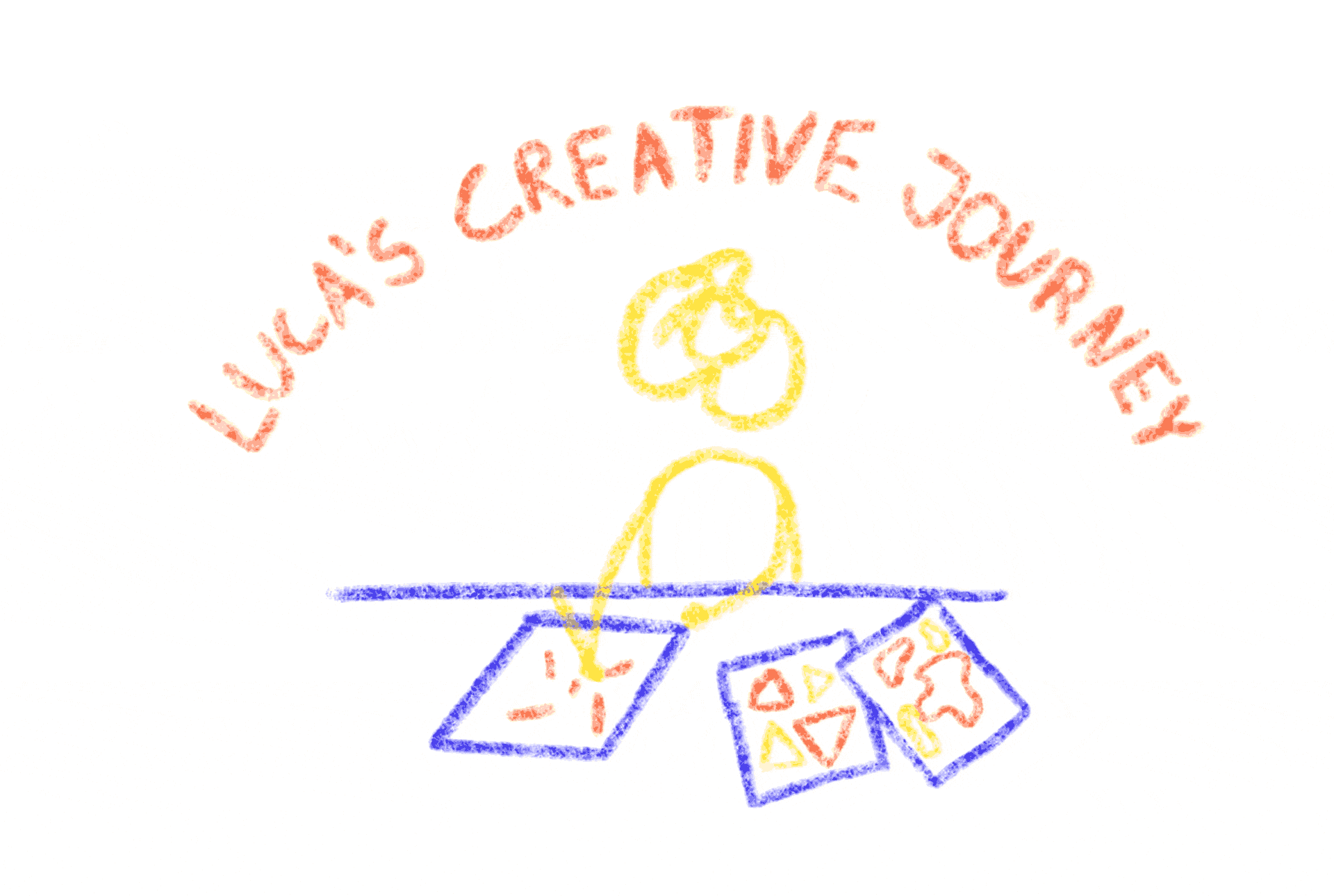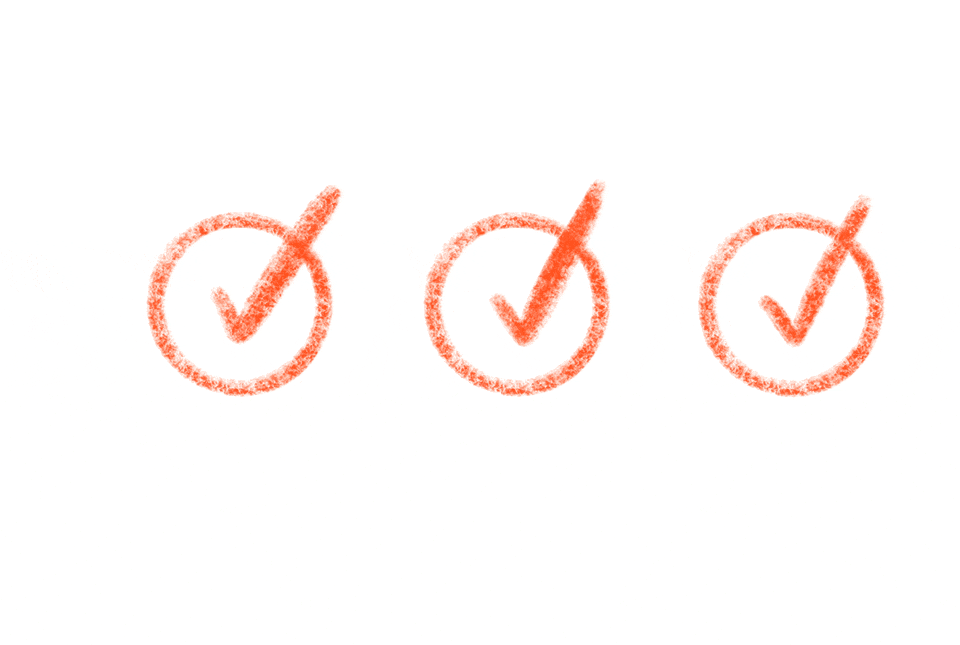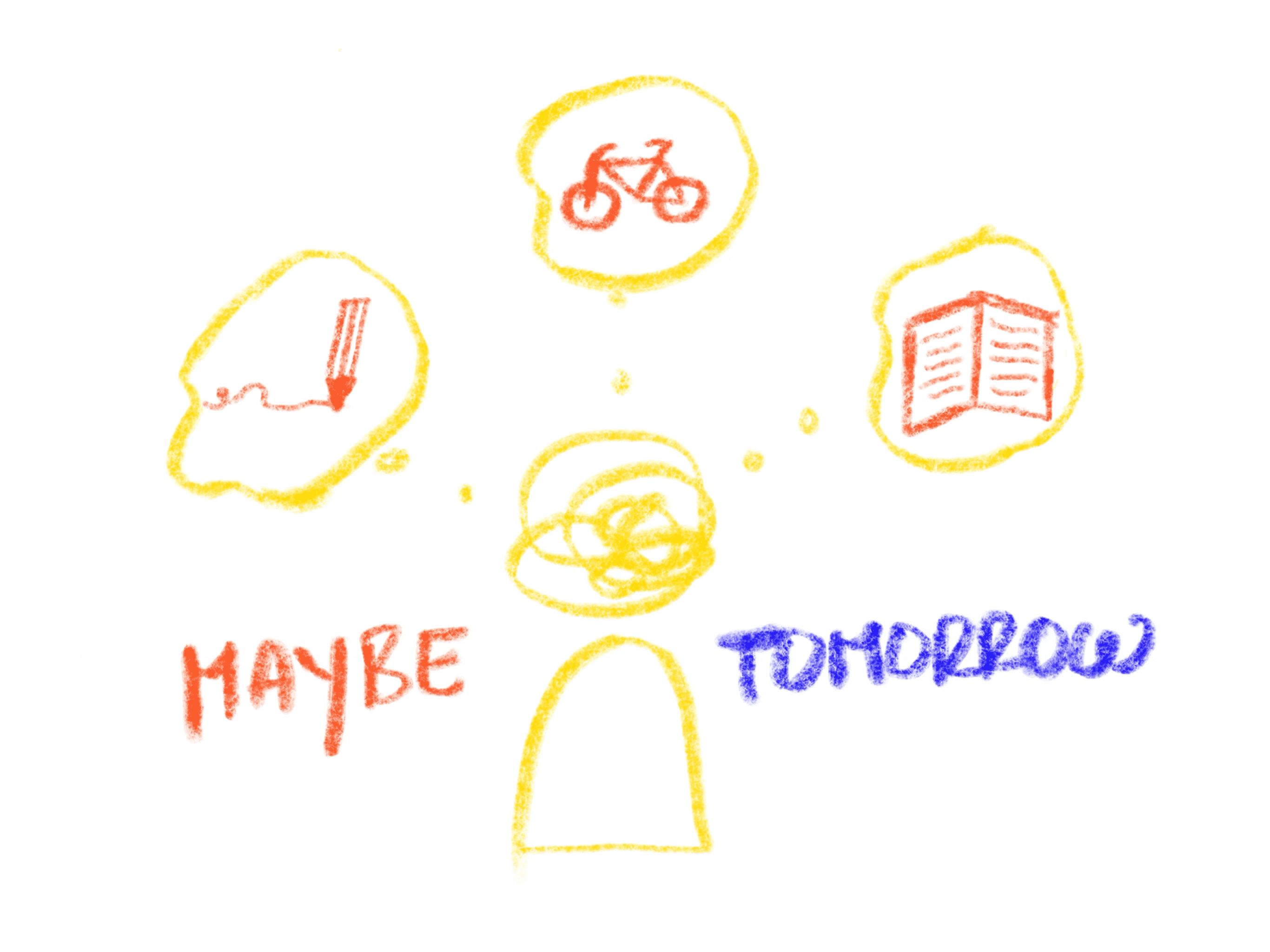Don't Quit Now! 👉 Your good intentions aren't the problem. It would be best if you had the right strategies so you don't get to quit.

The second Friday of January is the official Quitters Day. Only one person out of ten keeps up with their resolutions in the long run. Do you want to be this person?
If you are reading this article, you are likely to follow through. The tips I'm sharing will undoubtedly help you, but you are likely to follow through because you are actively looking for help, which is a sign you want to succeed in your quest. So all the props for your success go to you and not me. Let's go!
Before we start, here is a quick insight about me:
I know from experience how to keep up Run Streaks. I've been in the game with Habitual Run Streaks for over 4 years, still counting, without missing a single day. Daily Running, Meditation and posting a creative work are three daily habits that give me more power back than I have to put in. In a way, like a mental Perpetuum mobile.
Running & Meditation for 1466+ days
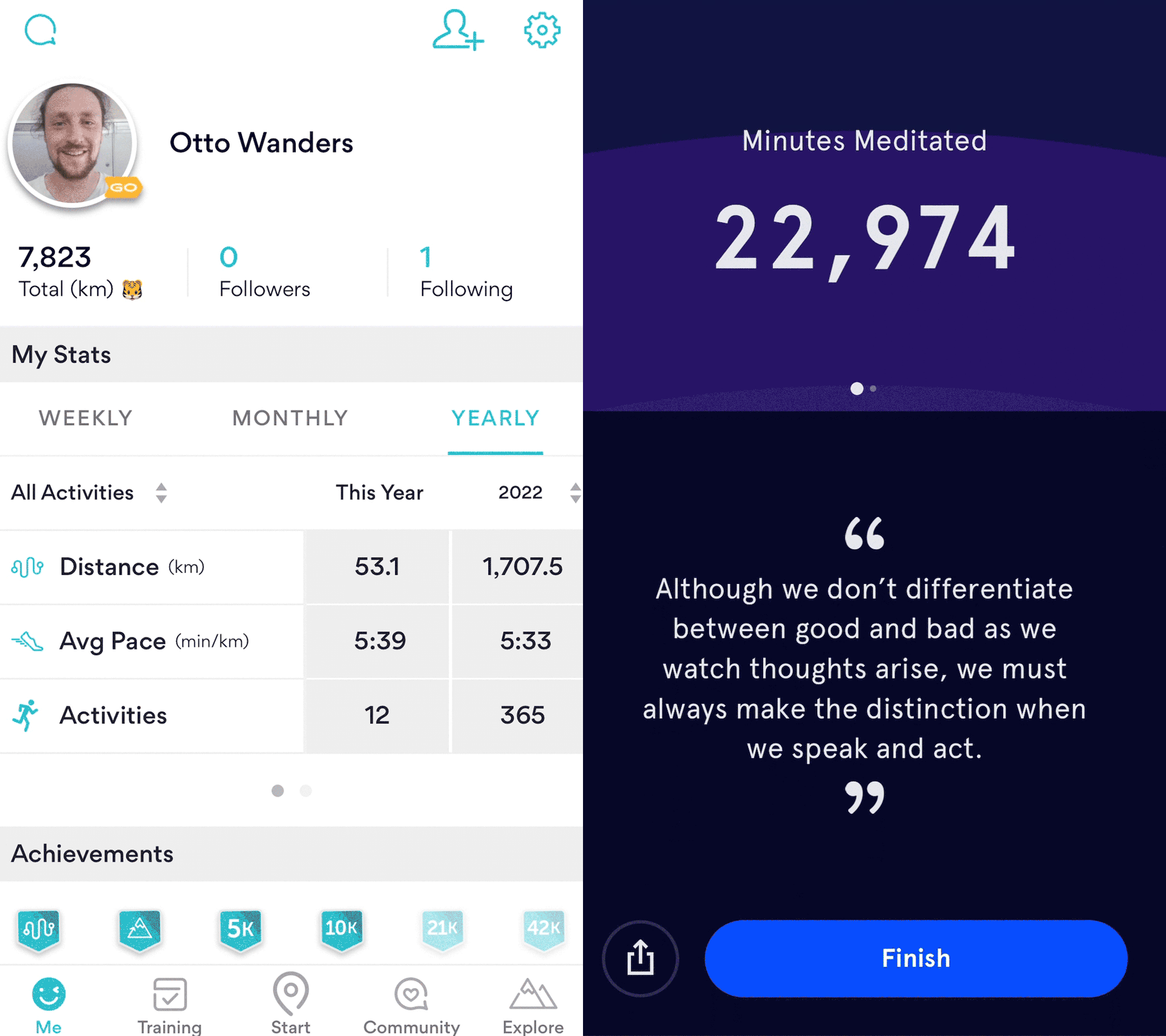
Posting one creative work per day for 1353+ days
A quarter after I experienced that the strategies of implementing habits work, I jumped over my perfectionist and started to publish one motion artwork per day on https://instagram.com/ottinzky.
The first 500 motion artworks
I never thought art lovers would acquire this when I started out. This is a side-effect of daily habits. They will serve your future-you in positive ways you can't all expect.
There were moments when I wanted to quit.
But I could overcome the crabby little bastard and stick to it. And I'm happy about it. You can do it too if you want AND have the right strategies.
Disclaimer: All of the experience I share is built upon the experience of other human beings. When it comes to habits, these remarkable authors guided me along my way. Peter Hollins, Stephen Guise, Andy Puddicombe, James Clear, Charles Duhigg, Jeremy Dean, Marshall Goldsmith. I'm sure the list isn't complete, as I'm learning from about two books per month.
And here are the 13 Tips.
Find them in detail below.
Make sure that the cue, craving, response and reward flow And one extra tip in the end: Reframe your new years' resolution into a single mandatory daily habit for this year. As soon you achieve a 6+ months Run Streak with the tips above, it's easy to stack another habit on top of it. If you try to implement more than one thing, you will likely lose focus and quit.
TIP 1
Don't let Crabby Little Bastards catch you so you can make a new personal record every day.
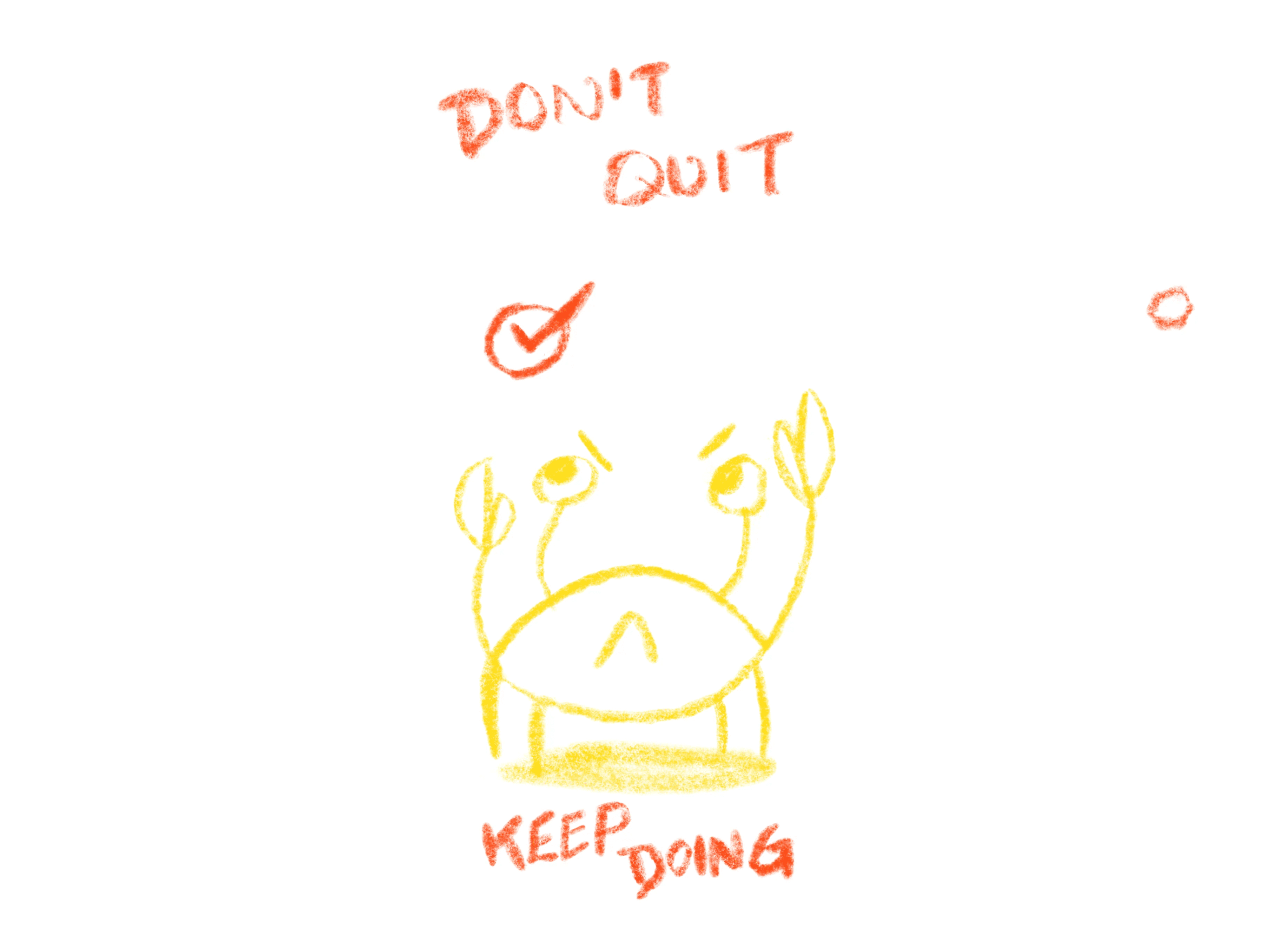
Sadly, even some of our closest relatives and friends don't want us to succeed. "if I can't have it, neither can you". This is a reason why some successful people never share their plans. It's self-protection from early critique and pullbacks.
I call people who pull us back Crab-People. Crabs, because when you put crabs in a bucket, you don't need a lid. If one wants to escape, the others pull it back. There is a saying that you are like the average of the five people you spend the most time with. Are you prisoned in a bucket with them? Or are you living outside of it in a world with limitless possibilities?
Pro Tip: The more mindful you are, the better you can catch the crab voices that became part of your thinking.
I can't
Don't
Not good enough
Not yet
etc.
If you catch your mind thinking like that, smile at it. Then label it as "crab voices" and return to the task you performed.
TIP 2
Lower your expectations when setting goals
When you set future plans with a motivated mindset, expectations are high. Often too high. And when your expectation is too high, you will perform inconsistently.
Many people set their resolutions like this. In the New Year, I will:
Read 5 books per month
Go to the gym 3 times per week
Stop smoking
And five more of these…
What do you think will happen? It's hard and, in my experience, not possible to change too many things at once. Willpower is like a muscle; if the muscle isn't strong, too many expectations are similar to too much weight for it. Lower your expectations to the level of your most unmotivated future-you when setting goals so that your future-you will do it without motivation. What will you keep on the list? Here is a single one I bet you can stick to if you want to read more.
Read at least one page per day.
Now you might think that gets you nowhere. But this is not the point. The point is to get started every day. When motivated, you might read a whole book in one day. And if you are unmotivated, one page. You will exceed your expectations by having a few motivated days per month.
Let's go to the next Tip, which is about these limits.
TIP 3
Set new limits
Upper limits serve your future-you too. Stopping an activity when it feels best, so you can be excited to start again tomorrow is an old tactic. I ran for over four years every day but never went for a marathon. I don't want to risk my future-you can't go.
So whatever limits you've set, think about it again. Set the new limits in a way you can start activities without motivation and that you can do it in the upcoming days.
TIP 4
Serve your winner mentality with small wins.
One of the most important things to understand is that making self-promises and breaking them lowers self-confidence. Don't make a promise to yourself if you don't mean it. It's like when another person tells you they will do something for you and then come up with excuses. After a few times, you will start disliking them or at least stop trusting them. The same is within us. That's why it's good to keep your word and serve yourself with small wins rather than disappointing yourself with unfulfilled big self-assignments.
You can try it out with something as simple as making the bed daily. Small wins like this can nourish your self-confidence. It serves your winner mentality.
TIP 5
Track your progress visually.
Tracking makes it real. If you can see it somewhere, it happened. If you share it with an accountability partner, the reality is approved.
The effect of seeing a chain of successes, even if just a few days, gives you an extra push to keep going. You might remember a past day you performed only by willpower and tell yourself, "Is it really harder today, and do I have to break the chain?"
Tracking your progress visually is a powerful tool for forming and keeping up daily habits of your choice. Some habit-tracking apps are out there, for example, Loop Habit Tracker for Android or Minihabits for iOS.
There is the old-fashioned way of printing out a table with calendar weeks and days and putting a dot inside. You have to see your progress visually and track it daily.
TIP 6
Make your progress public.
This is not about telling your plan to people because it will give your brain the idea you had already succeeded before you even started.
This is about making your progress public. Use a social media platform, make a new account and post your daily progress. It can be a selfie of you smiling with the caption "made it / Run Streak Day X". The post-count becomes your tracker for a single daily habit. Of course, this is one idea of making your progress public. Use your creativity.
TIP 7
Never miss twice
This is a Tip by James Clear, author of Atomic Habits, a must-read if you are interested in the power of habits.
Let's say something happens that you can't make the minimum amount of your daily habit. You can't read your single page or write a single sentence or do your daily drawing because you are knocked out for a whole day after a grizzly bear punched you in the face to get your snickers.
Don't miss a second day. Just get back into the game right after your missed day.
TIP 8
Understand how habits technically work
Habits have two phases. A problem phase and a solution phase. I like this example here primarily because we can all relate to it. Imagine going into your room, and it's dark. You turn on the light, and now you can see. You have performed this so many times that it's an automatic habit.
Let's break this down: Problem:
You realize it's dark in the room (cue)
You want to see (craving)
Solution:
You turn on the light (response)
You can see (reward)
Let's do it with something else:
You see crisps (cue)
This visual cue makes you want to snack (craving)
You snack (response)
You feel satisfied because the craving is gone (reward)
Cue: It's the thing that starts everything by reminding you about the reward. Cues can be visual, acoustic, situational, emotional, and so forth. A habit can have multiple cues.
Craving: Gives you all the reasons to take action. It's an unsatisfying place to be in. You want your satisfied future-you. You see the response as the way to get there.
Response: This is what we often see isolated as a habit. For example, "exercising". But why do people who exercise often look like they are in pain? How can this be joyful? The response isn't always pretty. It's the action you perform to get the reward.
Reward: Finally. The craving is gone. You are satisfied, and your mind learns here to remember this whole process. The reward closes the feedback loop.
In the last few tips, you learn how to tweak each of these steps to make habits stick. You can flip the tips into the opposite if you want to break a habit.
TIP 9
Make what should trigger your good habit evident (cue)
How often have you started eating junk food just because you saw it? If you don't have junk food at home, you eliminate many visual cues to start craving them. It's easier not to drink sugary drinks when you don't see them every time you open your fridge.
Talking about daily habits, you make the day itself a cue. Before the day ends, you have to get the reward of accomplishing your daily habit.
The clearer the cues are, the easier you can start this whole habit loop.
When you want to break a habit, eliminate the cues that kick it off. This isn't always working, as cues come in many forms.
You can stop bringing junk food to your home, but if you live with other people, you will run into the cues anyway.
TIP 10
Make why you want to achieve it attractive (craving)
Create attractive reasons to perform the action. It's easier to go to the gym when you remind yourself about the athlete you want to become. It's easier to write daily when you remind yourself that you want to become an author. It becomes even more attractive when you remind yourself WHY you want to become whatever identity you pursue.
When you want to break a habit, make it unattractive.
TIP 11
Make the action itself easy (response)
The easier the action, the more likely we will perform it to get the reward.
This is the main reason why small daily habits work so well. The minimum amount of the action itself is ridiculously low. It's so low that there is no excuse not to perform the action. e.g. writing one sentence daily for someone who wants to become an author.
When you want to break a habit, make it super hard.
TIP 12
Satisfy yourself after performing the action (reward)
When I signed up for the gym, they mentioned I could get one piece from the vending machine for every training. It only costs a little more, but you can choose from all the products.
I think that's a strategy to push people's reward system. Exercising has a delayed reward. So when you can eat or drink something directly after the workout, your brain surely gets its reward, remembers the loop and wants to do it again.
So if you satisfy yourself after performing the action, you can make a habit stick easier.
When you want to break a habit, make the reward unsatisfying. This is not always possible, especially with chemical reactions in your brain that happen because of the action.
TIP 13
Make sure that the cue, craving, response and reward flow.
The more these steps flow, the faster habits stick. The less they flow, the easier you can break a habit.
EXTRA TIP 14
Reframe examples
Make it small but make it every day. You will achieve so much more because you won't quit. Reframe your new years' resolution into a single mandatory daily habit for this year. As soon you achieve a 6+ months Run Streak with the tips above, it's easy to stack another habit on top of it. If you try to implement more than one thing, you will likely lose focus and quit.
I want to read one book per month.
I read one page per day.
I want to be more healthy.
I eat one apple per day.
I want to go to the gym 3 times per week.
I show up at the gym every day (no workout needed).
I take a walk in my gym outfit around the house every day.
I want to take more time for myself.
I go offline for 10 minutes every day.
You get the point.
PS: Don't forget to track it!




